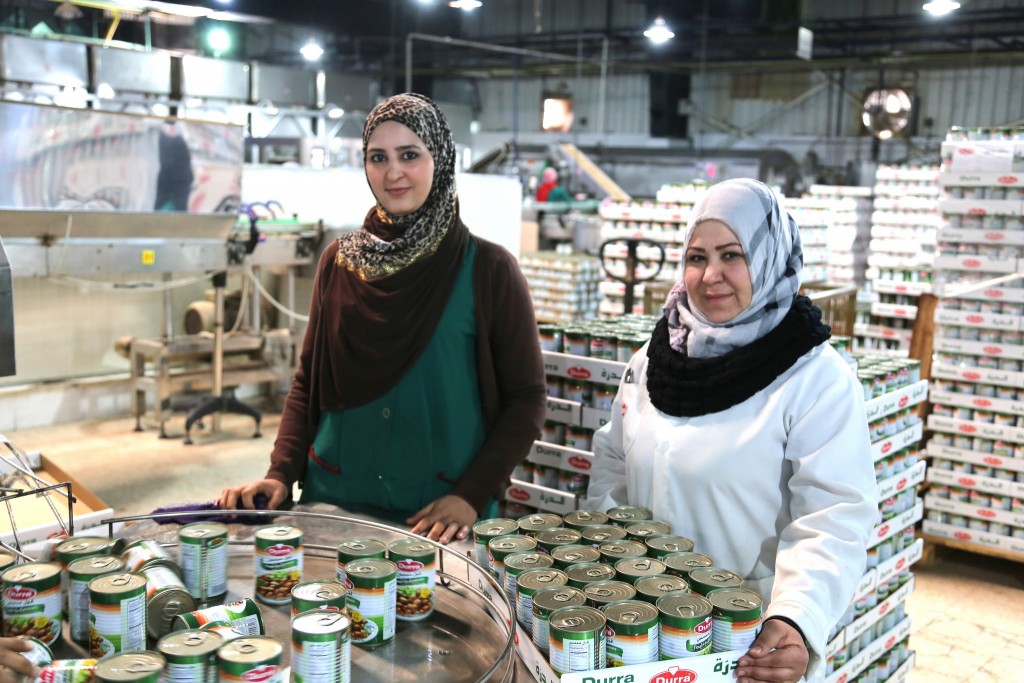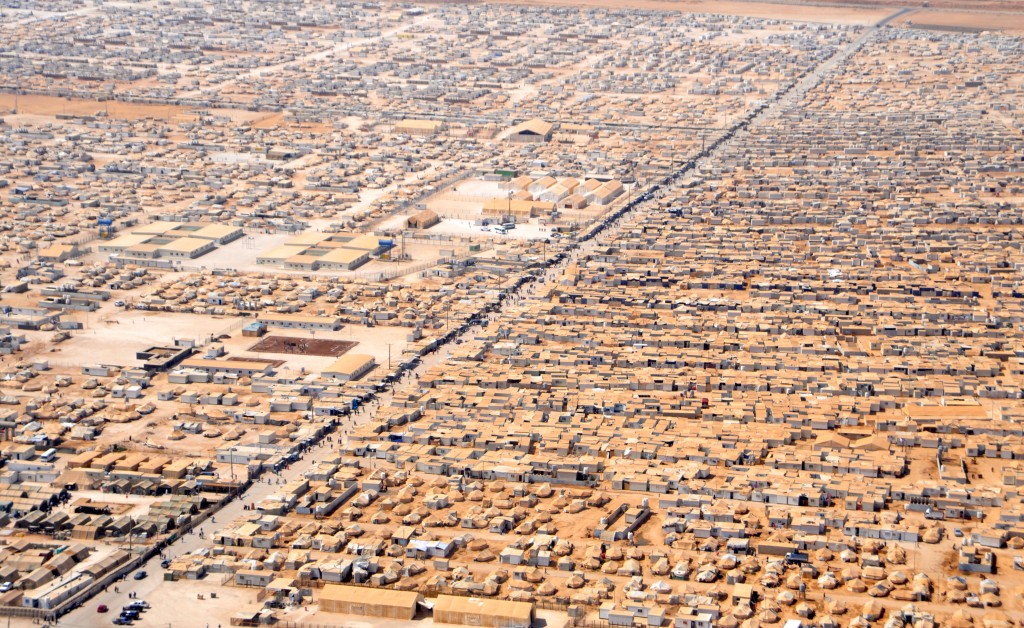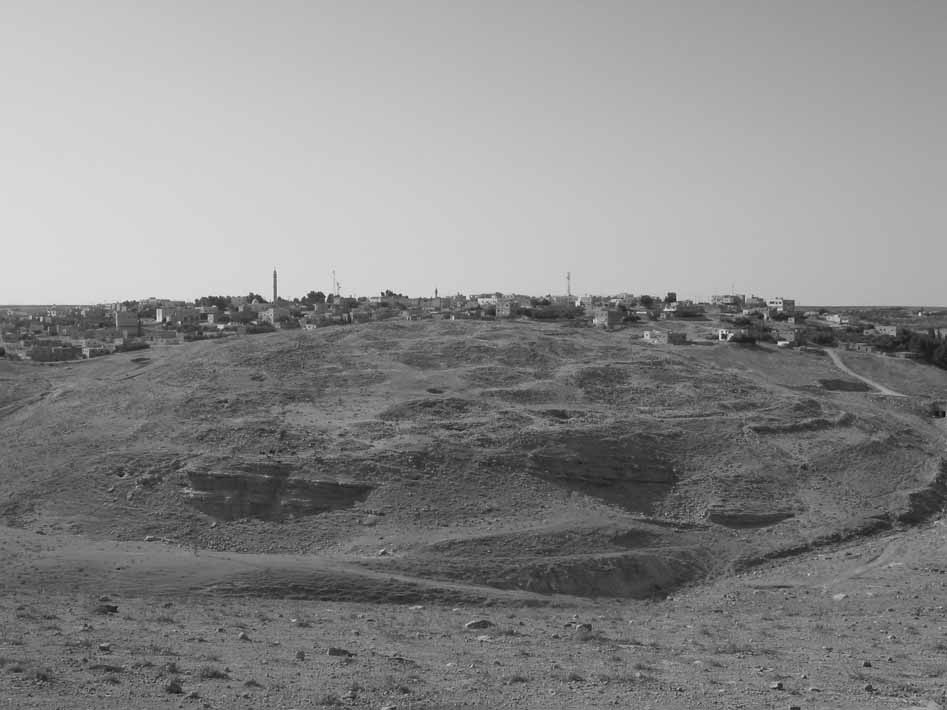Jordan is a pillar of any U.S.-based strategy for stability in the Middle East. But the kingdom now risks economic ruin.
In early October, it was announced that over the next 15 years, Jordan will purchase $10 billion in natural gas from Israel. Ever since, Jordanians have been demonstrating against the deal. Protesting Israel is a frequent pastime in the kingdom, but the low-level unrest is part of a much larger source of potential instability: Jordan’s persistently weak economy, which shows little sign of improving.
This summer, economic problems—especially that of unemployment—sparked Jordan’s most sustained demonstrations in three years. In May, 22 young men set up tents in the town square of Dhiban, 42 miles south of Amman, to protest the lack of available jobs. The peaceful sit-in lasted for nearly a month. In late June, Jordan’s gendarmerie, known in Arabic as the Derak, leveled the tents, sparking a series of violent clashes between police and the townspeople.
Videos subsequently posted on YouTube show the Derak launching tear gas grenades as protestors call for an end to the monarchy. A series of arrests ensued, resulting in a cycle of further demonstrations and incarcerations. After three Jordanian policemen in Dhiban were shot on July 22, Prime Minister Hani al-Mulki withdrew the Derak, leading to a decrease in tensions. The protests ended on July 28 when the final prisoner was released from jail.
Dhiban is a particularly depressed town, but in many ways the problems there encapsulate the challenges facing Jordan. In 2011, the official unemployment rate was over 13 percent. Five years on, after border closures with Syria and Iraq, plummeting investment, reduced remittances, and diminished tourism, unemployment stands at almost 15 percent, with joblessness among the youth approaching a staggering 40 percent.
In addition, there is the massive problem of refugees from Syria. According to the United Nations, Jordan now hosts nearly 650,000 registered refugees, although Amman says the number is closer to 1.4 million. While Syrians didn’t cause the spike in Jordanian unemployment, they exacerbate the problem. Only a small percentage of the refugees live in camps; the vast majority of them live in the kingdom’s cities and towns, where they rent homes and participate in the local economy. Amman initially hoped to limit Syrians to the construction, agriculture, and domestic sectors, essentially forcing them to compete with the 636,000 Egyptian expatriates living and working in the kingdom. That strategy didn’t work.
In an effort to reduce refugee influx to the continent, European donors leveraged foreign assistance to compel Amman to issue more work permits. And so despite limitations, highly motivated and entrepreneurial Syrians managed to enter the labor market. Syrians in service industries do not receive the Jordanian minimum wage, making them cheaper to employ. Skilled Syrian tradesmen also undercut local craftsmen. In northern Jordan, I was recently told, Syrian ceramic tile layers deliver superior workmanship for the price of 1.5 Jordanian Dinars (about $2) per square foot – half the going rate of their local competitors.
Syrians also appear to be taking take low paying and/or low status jobs that Jordanians simply won’t do. Indeed, despite high unemployment, Jordan is brimming with expatriate labor. In addition to the hundreds of thousands of Egyptians, tens of thousands of South and Southeast Asian women, many of whom have work permits, work as housekeepers. The Prince Hassan Industrial Qualified Industrial Zone (QIZ) in the northern town of Irbid, established after the 1994 peace treaty with Israel to promote cooperation with the Jewish state and boost Jordanian employment—QIZs can sell their products duty-free in the U.S.—is largely staffed by Bangladeshis.
This dynamic doesn’t necessarily increase joblessness in the kingdom, but it does highlight a significant challenge for Amman. There are employment opportunities in Jordan—but not for jobs Jordanians want. Part of the problem is a mismatch of skills and vacancies: More than 90,000 students register for university every year, leaving 16 percent of college graduates unemployed. Even more are underemployed. The dearth of appropriate local opportunities drives many Jordanians abroad. Today, according to the Jordanian government, half of the kingdom’s engineers work in the Gulf. The numbers are comparable in other professions. Accordingly, expatriate remittances last year accounted for 14.3 percent of the kingdom’s GDP. Yet declines in Gulf oil revenues make this dependency a volatile proposition: Since 2014, remittances have declined by almost four percent.
But part of the unemployment problem is cultural. Workforce participation in Jordan is quite low—36 percent according to the World Bank. Overall, nearly 60 percent of the kingdom’s working age population is inactive. Almost 60 percent of university graduates in Jordan are female, but women’s overall representation in the conservative kingdom’s labor force stands at an anemic 15 percent.
Opportunities are limited for less-educated Jordanian women as well. Filipino women with work permits can earn $300 per month for domestic work in the kingdom. Without permits, this can rise to $500. Yet this opportunity for a well-paying job is not available to many Jordanian women. It would be “impossible for cultural reasons,” one Jordanian analyst explained, “for Jordanian girls to do this work.”

Anood from Jordan and Salma from Syria, working together in a Syrian-owned food processing factory in Jordan. Photo: Bea Arscott / UK Department for International Development
The bigger cultural problem, however, relates to job preference. There are two major communities in Jordan—those of Palestinian origin and those of Bedouin tribal origin, who are referred to as “East Bankers.” Among Jordanians of tribal origin there is a marked penchant for public sector employment. Beyond the military and security apparatus—which are dominated by tribal Jordanians—East Bankers want careers in government for a variety of reasons. Despite the low pay—about 300 dinars or $425 per month—these positions offer job security, relatively lax performance and attendance standards, low retirement ages, pensions, and subsidies.
More important is the cultural cache that comes with government positions. Jordanians say it is easier for East Banker men to get married when they hold public sector jobs. During a recent trip to the kingdom, I was told the story of a young tribesman who asked a father for permission to marry his daughter. The young man, who was gainfully employed by a local company earning a very respectable 600 dinars a month, was rebuffed and told to return “when you have a good government job”—making half as much.
Traditionally, tribes have received the lion’s share of Jordan’s security-related and bureaucratic posts. But in Jordan, as elsewhere, public sector hiring isn’t what it used to be. In 2013, government positions accounted for 39 percent of all employment in the kingdom—463,000 jobs. That figure is enormous, but represents a significant decrease from 1986, when the public sector provided more than 51 percent of employment in Jordan. Belt-tightening in Amman has led to severe competition for these scarce posts among Jordanians, irrespective of origin. In 2013, 200,000 local college graduates applied for 6,400 civil service jobs.
This labor market dynamic played out in Dhiban this summer. In an effort to diffuse the conflict, the Jordanian government prevailed on private sector companies to find jobs for the unemployed protestors. According to Minister of State Khaled Hneifat, the government secured 24 positions for the activists, who—preferring public sector employment—promptly rejected the offer.
Even if the protestors had taken the jobs, however, it wouldn’t have had much impact. According to Mohammed Sneid, an agricultural engineer who has led the protest movement in Dhiban since 2011, unemployment in the district of 50,000 stands at 70 percent.
At one time, Dhiban was an agricultural region, with water provided by the Wala River. But changes in weather patterns—and, says Sneid, the diversion of water to an increasingly thirsty Amman—choked off this sector. Today, the locals have access to water for just six hours a week, insufficient to support farming or large-scale animal husbandry. In recent years, USAID planted thousands of olive trees and almond saplings—seeds used as a garnish in Jordan’s national dish of lamb, rice, and yoghurt, known as mansaf—in the area. A recent tour of the environs showed dozens of groves abounding with mature trees, which, lacking adequate water, do not bear fruit.
Opportunities in local industry are little better. Dhiban’s district has one factory, which produces clothing. The al-Safi plant, in the town of Mleih, employs 490 workers—many of whom are not from Dhiban—who are paid 210 dinars or $295 per month, well under the poverty line of 500 dinars. In July 2015, the garment workers went on strike, but were unsuccessful in securing higher salaries.
Another possibility for employment-generation is Tel Dhiban, the historical ruins of the capital of a Moabite kingdom dating back to the 6th-7th century. Despite the fact that this site is just 18 miles away from the tourist mecca of Madaba—home to Jordan’s most impressive collection of ancient mosaics, the Church of St. John the Baptist, and nearby Mt. Nebo, where Moses purportedly died—few if any visitors end up visiting Dhiban. The site has been neither restored nor secured, constituting a missed opportunity for tourist revenue. Meanwhile, during the clashes this summer, several ancient pillars at the entrance to the archeological site went missing.
Notwithstanding continued high unemployment, four months after the demonstrations, Dhiban remains, for the time being, quiet. The town square is tent-free, and tensions between the locals and the government are greatly diminished. On July 29, the father of Mohammed Khalil al-Hawawsheh—the last of the protestors to be released—hosted dozens of well-wishers at his home. Mohammed, who spent 20 days in jail, was in good spirits. Yet his months of activism yielded scant benefit. He told me that he still has no job and no hope of finding one. He did not intend to participate in Jordan’s September 20 parliamentary elections, believing the contest would have little impact on his prospects for employment.
Fortunately, the Jordanian government recognizes that solving its unemployment crisis is a priority. The kingdom has a plan—articulated in its National Employment Strategy 2011-2020—to tackle structural problems, focusing on reducing expatriate labor, encouraging investment, supporting entrepreneurship, and vocational training. It is clear, however, that the strategy will take a long time to implement. Moreover, for the plan to ultimately succeed, Jordan will have to change the culture of its labor force, a difficult proposition at best.
In the near term, international largesse will help the kingdom weather the storm. For example, between economic and military support, the U.S. alone will provide Jordan with more than $1.6 billion in 2016, the equivalent of 10 percent of the national budget. The kingdom will also benefit from the overwhelming desire of most residents for stability. Concerned about Syrian-style deterioration, Jordanians have since 2011 largely eschewed protest. As the events this summer in Dhiban suggest, however, their patience is limited.
![]()
Banner Photo: Makeandtoss / Wikimedia







